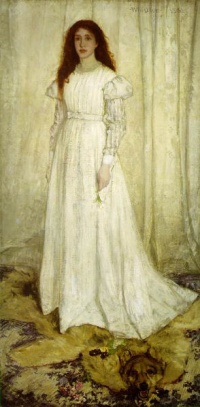Realist visual arts
From The Art and Popular Culture Encyclopedia

|
Related e |
|
Featured: |
Realism is a style of painting that depicts the actuality of what the eyes can see. Realists render everyday characters, situations, dilemmas, and objects, all in verisimilitude. They tend to discard theatrical drama, lofty subjects and classical forms in favor of commonplace themes.
Realism appears in art as early as 2400 BC in the city of Lothal in what is now India, and examples can be found throughout the history of art. In the broadest sense, realism in a work of art exists wherever something has been well observed and accurately depicted, even if the work as a whole does not strictly conform to the conditions of realism. For example, the proto-Renaissance painter Giotto di Bondone brought a new realism to the art of painting by rendering physical space and volume far more convincingly than his Gothic predecessors. His paintings, like theirs, represented biblical scenes and the lives of the saints.
In the late 16th century, the prevailing mode in European art was mannerism, an artificial art of elongated figures in graceful but unlikely poses. Caravaggio emerged to change the direction of art by depicting flesh-and-blood human beings, painted directly from life with an immediacy never before seen.
A fondness for humble subjects and homely details characterizes much of Dutch art, and Rembrandt is an outstanding realist in his renunciation of the ideal and his embrace of the life around him. In the 19th century a group of French landscape artists known as the Barbizon School emphasized close observation of nature, paving the way for the Impressionists. In England the Pre-Raphaelite Brotherhood rejected what they saw as the formulaic idealism of the followers of Raphael, which led some of them to an art of intense realism.
Trompe l'oeil (literally, "fool the eye"), a technique which creates the illusion that the objects depicted actually exist, is an extreme example of artistic realism. Examples of this tendency can be found in art from antiquity to the present day.
Notes
- Realism in the visual arts can refer to specific art movements (e.g. Social realism or Russian socialist realism) as well as verisimilitude (photographic ...
Realists render everyday characters, situations, dilemmas, and objects, all in a "true-to-life" manner. Realists tend to discard theatrical drama, lofty subjects and classical forms of art in favor of commonplace themes.
However no art can ever be fully realistic. Distortion in form, simplification of details are required for any painting. Taking this argument further, newer forms of art like Surrealism, hyperrealism, Magic Realism have developed in the field of visual art.

